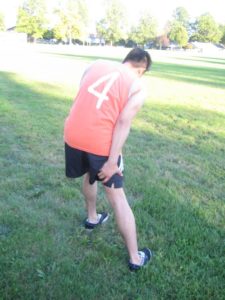Sciatica is characterized as leg pain that can be excruciating which makes sitting or standing almost impossible.
In most cases, the pain is worse when sneezing, sitting or coughing. The condition can arise abruptly or develop in a gradual manner. There is also numbness, weakness or burning down the leg, even up to the toes.
What are the causes?

Sciatica might be an indication of a pinched nerve that affects one or several of the lower spinal nerves. It is important to note that the nerve could be crushed within or outside the spinal canal as it moves into the leg.
The conditions that causes sciatica include:
- Slipped or herniated disc – this places pressure on a nerve root and the common cause
- Spondylolisthesis – this involves slippage of one vertebra where it is misaligned that results to the narrowing of the opening in which the nerve exits
- Spinal stenosis – this condition is due to the narrowing of the spinal canal with pressure on the nerves
- Piriformis syndrome – this involves the tightening or spasm of the piriformis muscle that places pressure and irritate the sciatic nerve
Management of sciatica
The objective of treatment of sciatica is to reduce the pain and improve mobility. The treatment often includes limited rest, physical therapy and medications for the inflammation and pain. Additionally, a physical therapy program might be recommended.
Medications
Pain medications and anti-inflammatory drugs are given to reduce the pain and rigidity to allow improve mobility.
- Non-steroidal anti-inflammatory drugs (NSAIDs) – aspirin, naproxen and ibuprofen
- Muscle relaxants – these are given to alleviate the discomfort linked with the muscle spasms
Physical therapy
The objective of physical therapy is to find movements that reduce sciatica by lowering the pressure on the nerve. A program often includes stretching exercises to improve flexibility of the tight muscles as well as aerobic exercise such as walking. In addition, exercises that strengthen the back, leg and abdominal muscles might be suggested.
Spinal injections
An injection of cortisone into the lower back can help reduce the inflammation and swelling of the nerve roots. This helps allow improved mobility for the individual.
Surgery
Surgical intervention might be required for cases that do not respond to conservative treatment, those who have progressing symptoms and if there is significant pain. The commonly used options include microdiscectomy and laminectomy.
